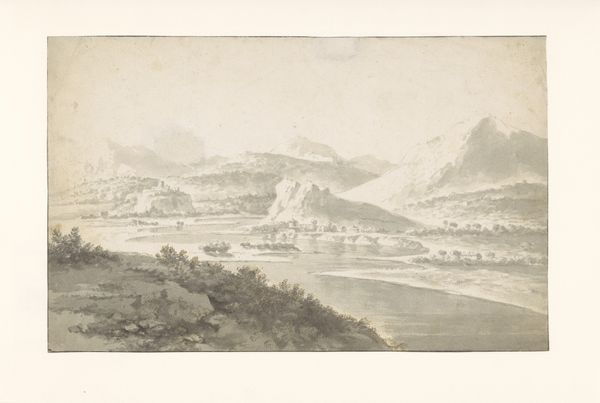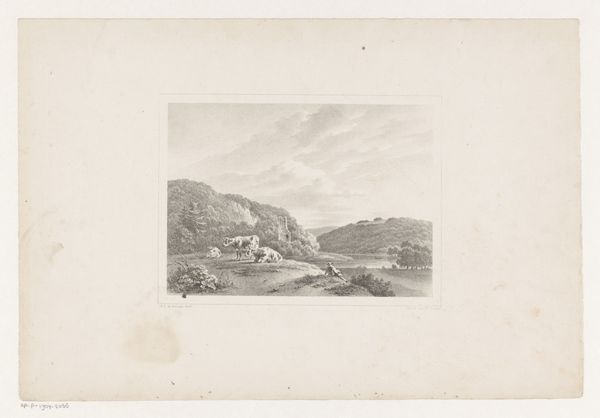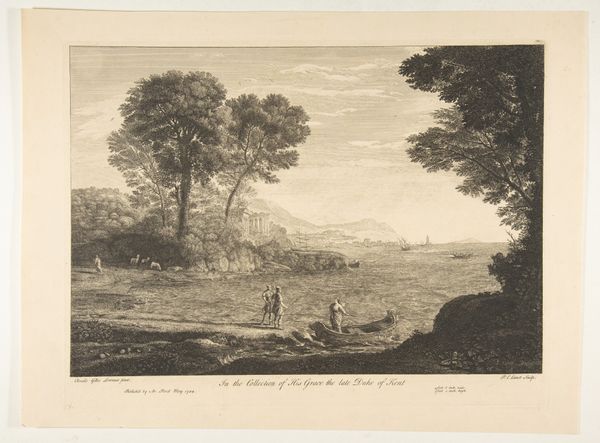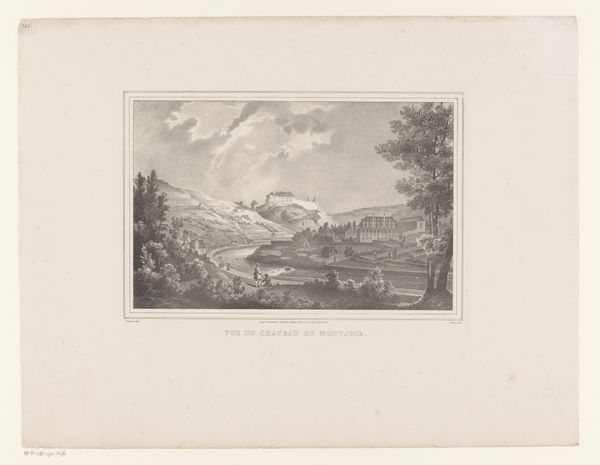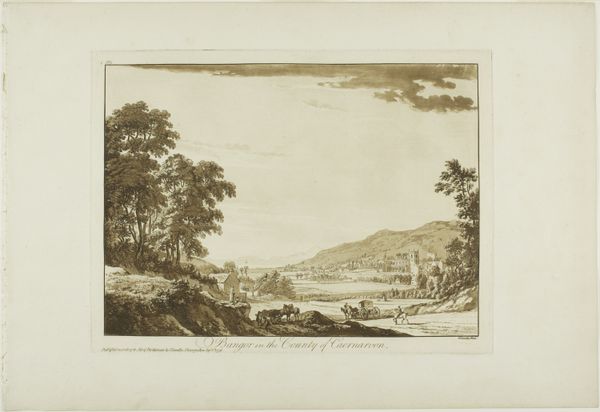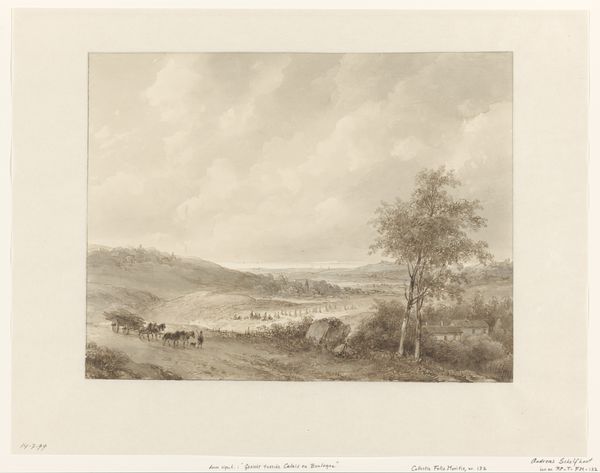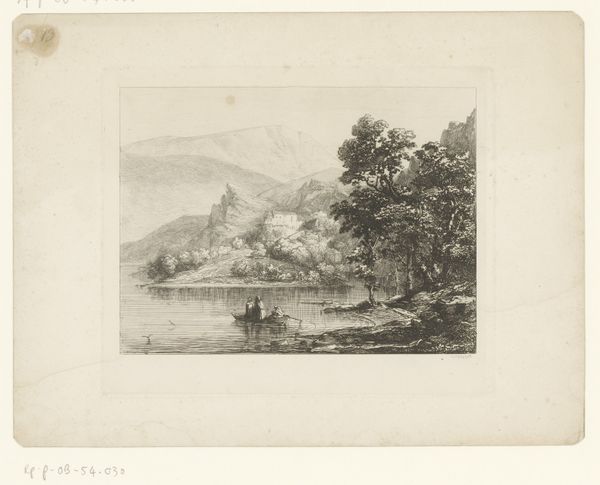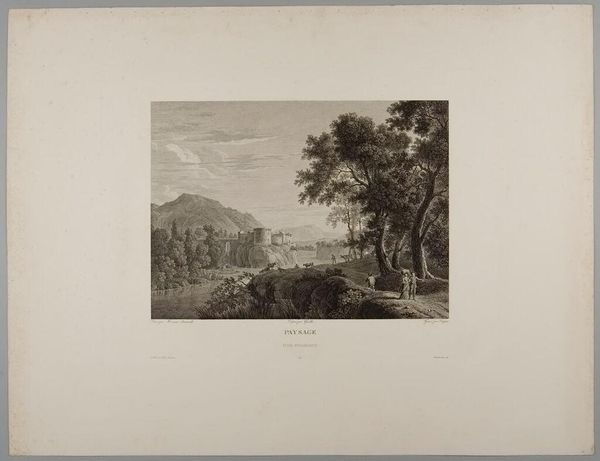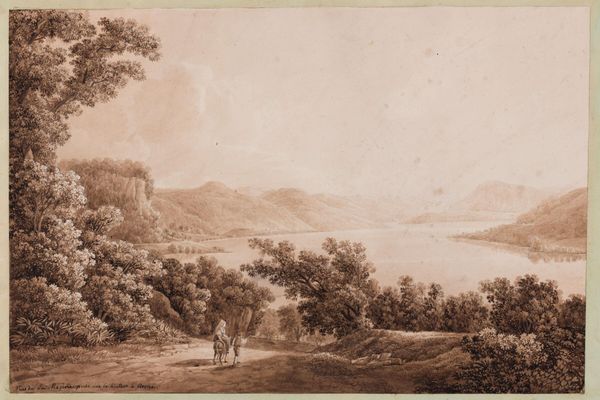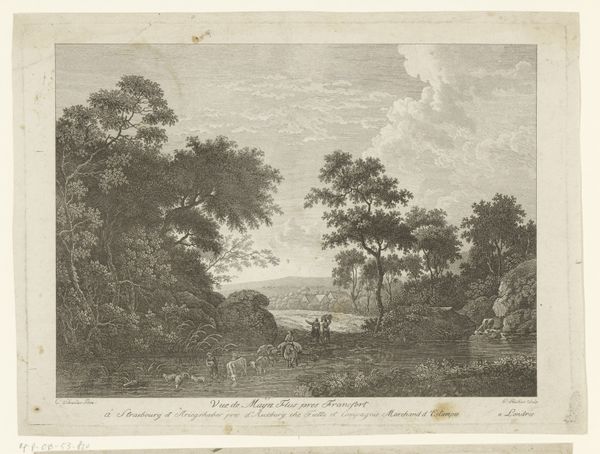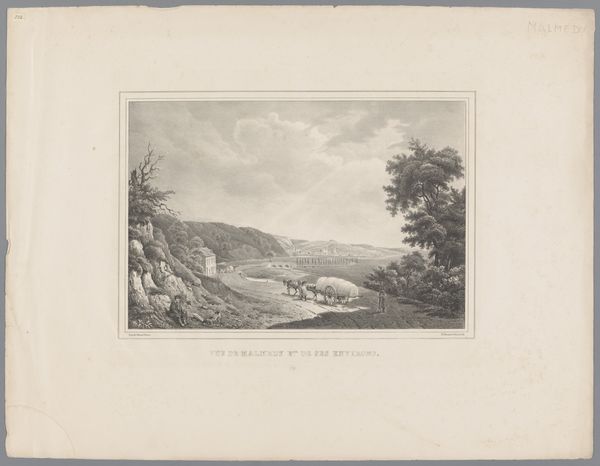
Dimensions: height 305 mm, width 466 mm
Copyright: Rijks Museum: Open Domain
Curator: This is "River Landscape near Mülheim an der Ruhr," a drawing by George Andries Roth, dating roughly from 1819 to 1887. It's done with pen and ink on paper, showcasing a serene riverside vista. What are your initial impressions? Editor: There's a delicate balance in the grayscale palette that creates a tranquil yet slightly melancholic mood. It reminds me of quiet afternoons spent watching a river flow, the world in soft focus. Curator: Interesting you pick up on that softness. For me, the focus immediately goes to the materiality – the evident use of pen and ink, the choice of paper, and its implications. Roth selected these specific tools for on-site sketching, possibly for a larger project. It demonstrates a very deliberate act of production tied to direct observation. Editor: I agree that his process points to direct observation, but it’s interesting how the image also subtly evokes the Romantic movement. The landscape as a mirror for inner emotions... that vast, cloudy sky almost feels heavy with unexpressed feeling. There’s also the city in the distance, barely there—a faint suggestion of human presence overshadowed by nature. Curator: Indeed. But also consider that Mülheim an der Ruhr was already becoming an important industrial center during Roth’s lifetime. Viewing this work from the vantage point of the late 19th century—a moment of increased steel production and urban expansion—changes our interpretation of the artwork. Was he documenting a disappearing way of life? Editor: Perhaps. The river itself, as a symbol, could be understood in multiple ways, carrying cultural associations tied to life and transition, its presence shaping human settlements since antiquity. The choice to render it with such detailed clarity makes its significance unavoidable. Curator: What fascinates me further is how plein-air artwork becomes entwined with emerging social realities and material possibilities. Roth had to consider portability and ease of use to be out in the landscape, and such artwork, being relatively easy to produce, spoke to an expanding market for artworks in the 19th century. Editor: Absolutely, it reminds us that landscape isn't just about picturesque beauty; it’s a loaded space with symbols. Roth’s skill lies in intertwining realism with emotion and evoking layers of cultural history that remain present to this day. Curator: Thinking through the process and the social landscape allows us a better, deeper understanding, perhaps even echoing resonances of an industrializing world still embedded in this peaceful drawing. Editor: It definitely makes us more attentive to the quiet narratives embedded in such ostensibly 'simple' depictions. Thank you.
Comments
No comments
Be the first to comment and join the conversation on the ultimate creative platform.
